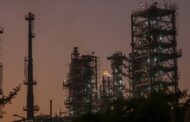Seattle’s Energy Northwest, a municipal joint action agency that provides power to 29 municipal distributors across the Evergreen State, is moving forward on a plan to build a fleet of small modular nuclear reactors on the Department of Energy’s Hanford former weapons production site.
Officials from Energy Northwest are scheduled to meet with staff from the U.S. Nuclear Regulatory Commission next week (Aug. 20) to discuss the project. Energy Northwest wants to build up to 12 80-MW high temperature gas-cooled reactors, starting with four units.
In June 2023, the joint action agency signed a deal with X-Energy Reactor Company of Rockville, Md., for the company’s Xe-100 modular HGTRs. Energy Northwest hopes to bring its first unit into service by 2030, but that date is highly speculative as the reactor design has not received an NRC license.
The Xe-100 is helium cooled. The reactor core consists of some 220,000 TRISO graphite moderator billiard-ball sized spheres with 20% enriched uranium particles embedded in the graphite matrix. The reactors can be refueled online. The steam outlet temperature, according to X-energy, is 565⁰ C, compared to about 315⁰ C for a typical pressurized light water reactor.
X-energy has a fuel fabrication project underway in Oak Ridge, Tenn., on government land supported by a $148.5 million construction tax credit the Department of Energy awarded under the terms of the Inflation Reduction Act.
Gas cooled reactors date back to the 1950s, with San Diego-based General Atomics (GA) playing a key early role. GA in 1958 designed the Peach Bottom 1 HTGR outside Philadelphia under a cooperative agreement among the Atomic Energy Commission, Philadelphia Electric Co., and GA, with Bechtel Corp. as the architect-engineer.
Construction of the 40-MW unit began in 1962. The unit connected to the grid in 1967 and went into shutdown in 1974 after a successful run. A 330-MW scaleup of the HTGR, Fort St. Vrain in northern Colorado operated only fitfully between 1979 and 1989. Germany also had mixed results with HTGR reactors. China announced last December that it had begun commercial operation with a two-unit, 200-MW HTGR project in Shandong province.
Energy Northwest is already primarily a nuclear utility. The mainstay of the generating system is the Columbia station, a 1,200-MW General Electric boiling water reactor that began construction in 1973 and went into service in 1983. Its license expires in 2043. The system’s other generators are the Nine Canyon wind project, with 96-MW produced from 63 wind turbines; the 27.5-MW Packwood hydro facility that has operated since 1964; the tiny White Bluffs solar station with capacity of 29.5-KW from 242 panels; and the Horn Rapids 4-MW photovoltaic project with a 1-MW/4MWh battery storage component.
Energy Northwest, formerly known as the Washington Public Power Supply System, has had a troubled nuclear past that prompted its name change. As HistoryLink.org writes, “Well-meaning officials believed that building nuclear power plants was the best way to supply clean and cheap electricity to customers. Events and human inadequacies produced the largest municipal bond default in U.S. history. The system’s acronym, pronounced ‘whoops,’ came to represent how not to run a public works project.”
As was the case for many U.S. electric utilities, publicly-owned or investor-owned, the widespread belief was that electric demand would be a consistent 7% annually, doubling every 10 years. Many believed this as an article of faith well into the 1980s, when it had clearly become a false illusion.
WPPSS was among the true believers. Over a short period starting in 1971, the power system ordered five large nuclear plants. WPPSS, using the advantage of tax-free municipal bonds, borrowed heavily to build the plants, assuming that power sales would cover their rapidly growing debt.
All of the usual woes that plagued big nuclear construction projects in the 1970s struck WPPSS: inflation, design changes on the fly, unrealistic schedules, environmental opponents. But the history web site addresses the fatal problem for WPPSS, pushing up costs to three to four times the original estimates. History Link noted that “the biggest cause of delays and overruns was mismanagement of the process by the WPPSS. The directors and the managers of the system had no experience in nuclear engineering or in projects of this scale. System managers were unable to develop a unified and comprehensive means of choosing, directing, and supervising contractors. One contractor, already shown to be incompetent, was retained for more work. In a well-publicized example, a pipe hanger was built and rebuilt 17 times. Quality control inspectors complained of inadequate work that went unaddressed.”
WPPSS managers failed to face their problems honestly and tried to hide their mismanagement from by far their largest customer, Seattle City Light. When the city discovered the duplicity, the city council voted 6-3 to pass on supporting WPPSS 4 and 5.
WPPSS pulled the plug on 4 and 5 in January 1982, when the projected cost hit $24 billion, defaulting on $2.25 billion in bonds, which the municipal customers were stuck with. WPPSS soon scrubbed plants 1 and 3, with the federal government’s Bonneville Power Administration eating the default. Plant 2 at Hanford went into commercial service in 1984, now named the Columbia Generation Station. By then, WPPSS had widely become known as “Whoops.”
Predictably, litigation accompanied the defaults. Final settlements totaling some $800 million came in 1995. WPPSS changed its name to Energy Northwest in 1998. History Link noted, “The change did not come seamlessly. It cost ratepayers more than $260,000, including about $140,000 to come up with the name and more than $123,000 to settle a lawsuit filed by another organization that was already using the name.”
–Kennedy Maize












